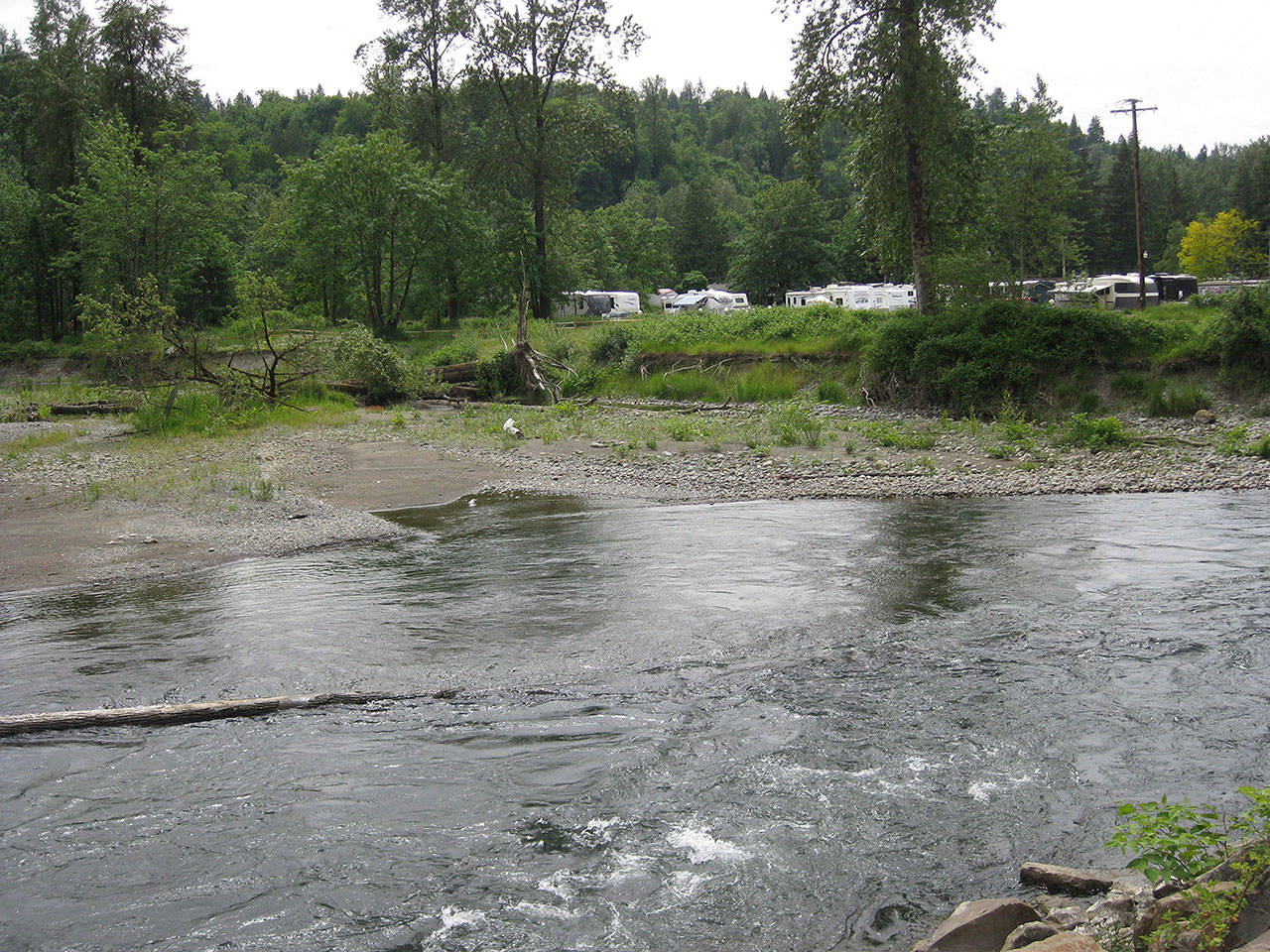The following is a press release from the Washington State Recreation and Conservation Office:
The Washington Salmon Recovery Funding Board announced Dec. 16 the award of $26.1 million in grants for projects across the state aimed at bringing salmon back from the brink of extinction.
This year marks the 20th anniversary of the board’s creation and the suite of projects announced today brings the total amount of salmon recovery since the board’s start as follows:
• 713 barriers to migrating fish corrected, giving salmon access to 2,082 miles of habitat
• 537 miles of streams conserved to ensure they remain healthy habitat for generations of salmon to come
• More than 48,500 acres of shorelines, estuaries, wetlands, and other stream habitat restored
• More than 17,700 acres of land along rivers, wetlands, and estuaries cleared of invasive species
With today’s decisions, the board has approved a total of 3,093 grants and surpassed the $1 billion investment mark since 1999, including matching funds from grant recipients.
“The work being done across the state on salmon recovery is critical,” said Gov. Jay Inslee. “These grants for on-the-ground projects will help us restore salmon to healthy levels that allow for both protection and a robust fishery. We must do everything we can to restore this beloved Washington icon and help orcas, which are starving due to lack of salmon, before it is too late.”
“These grants create many other benefits for local communities, such as better water quality, less flooding, more resiliency to climate change and a boost to our statewide economy,” said Phil Rockefeller, chair of the Salmon Recovery Funding Board. “Since the board’s beginning, its grants have created or sustained more than 4,000 jobs and contributed to the state’s economy as grant recipients spend the money for products and services.”
The Salmon Recovery Funding Board awarded grants to organizations for 96 projects in 28 of the state’s 39 counties. Grant recipients will use this funding to remove barriers that prevent salmon from migrating to and from the ocean, increase the types and amount of salmon habitat and conserve pristine areas.
In total, King County is receiving just over $1.5 million in grants, and Pierce County around $1,180,000.
Projects relevant to those on the Plateau include some Green River restoration.
According to the Recreation and Conservation Office, the King County Water and Land Resources Division will spend approximately $300,000 to restore about a third of a mile of the middle Green River, as well as create a two-thirds mile off-channel habitat and 20 acres of surrounding floodplain habitat east of Auburn.
Over in Pierce County, the pipe manufacturing company Forterra will be spending about $400,000 to buy nearly 34 acres along the South Prairie Creek and design restoration for that area.
Both the South Prairie Creek and the Green River are used by steelhead trout and coho salmon, species of which are either on the federal Endangered Species Act or are of federal concern.
HOW PROJECTS ARE CHOSEN
Projects are selected by lead entities, which are watershed-based groups that include tribes, local governments, nonprofit organizations and citizens. This ensures that the projects selected are community priorities. Lead entities vet projects based on federally approved, regional salmon recovery plans and prioritize projects to submit to the Salmon Recovery Funding Board for funding. Regional salmon recovery organizations and the board review each project for cost-effectiveness and to ensure they will benefit salmon.
“This community-based approach, combined with regional and state scientific review ensures that we are picking the projects that will benefit salmon the most,” said Kaleen Cottingham, director of the Washington State Recreation and Conservation Office, which administers the grants. “While salmon are not recovered yet, these grants have had a significant impact on slowing the decline of salmon and in some cases helping to bring them close to recovery goals. This is not easy work and change won’t happen quickly, but without these grants, it won’t happen at all.”
WHY SAVE SALMON?
Washington salmon populations have been declining for generations. As Washington grew and built its cities and towns, it destroyed many of the places salmon need to live. In 1991, the federal government declared the first salmon as endangered. By the end of that decade, salmon and steelhead and bull trout populations were listed as threatened or endangered in three-quarters of the state.
Those listings set off the formation of the Salmon Recovery Funding Board to oversee state and federal investments in salmon recovery. Funding for the grants comes from the Legislature-authorized sale of state bonds and from the federal Pacific Coastal Salmon Recovery Fund, which National Oceanic and Atmospheric Administration’s National Marine Fisheries Service administers.


